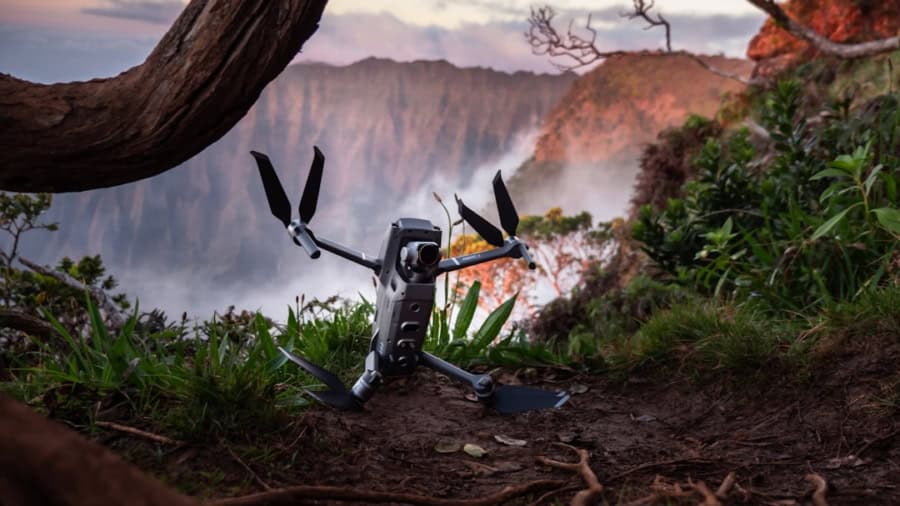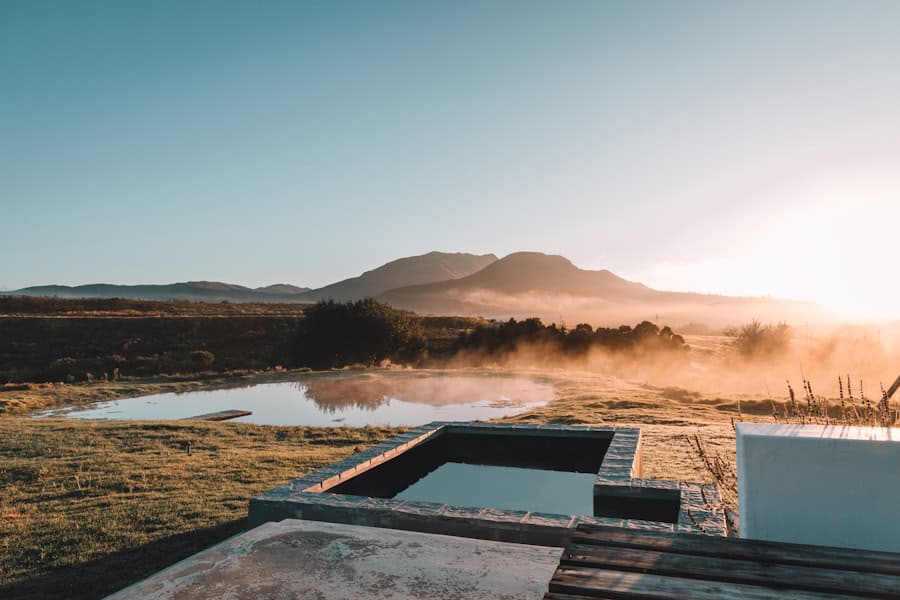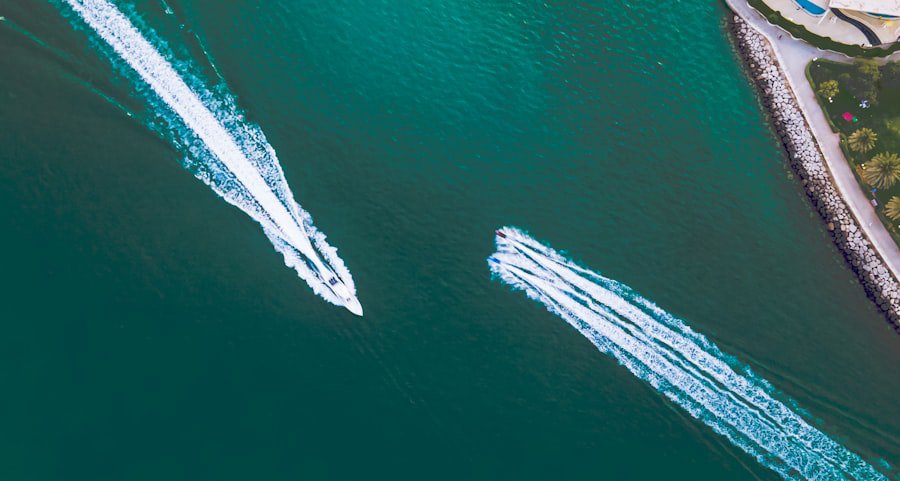The advent of drone technology has revolutionized the landscape of personal photography and videography, offering enthusiasts and professionals alike unprecedented opportunities to capture stunning aerial perspectives. Drones, equipped with high-resolution cameras and advanced stabilization systems, have democratized aerial imaging, making it accessible to a broader audience. No longer confined to the realm of professional filmmakers or specialized aerial photographers, individuals can now harness the power of drones to document their lives, adventures, and creative projects from breathtaking heights.
As drones have become more user-friendly and affordable, their popularity has surged among hobbyists and content creators. The ability to capture sweeping landscapes, dynamic action shots, and unique angles has transformed the way people approach photography and videography. Whether it’s a family gathering, a wedding, or a travel adventure, drones provide a fresh perspective that traditional photography methods simply cannot match.
This article delves into the myriad advantages of using drones for personal photography and videography, explores the various types available, discusses essential regulations and safety considerations, offers tips for capturing the best shots, examines editing techniques, and looks ahead to future trends in this exciting field.
Key Takeaways
- Drones have revolutionized personal photography and videography, allowing for unique and stunning aerial shots.
- Advantages of using drones include capturing perspectives that were previously impossible, saving time and money, and adding a wow factor to your content.
- There are various types of drones available for personal photography and videography, ranging from beginner-friendly models to professional-grade options.
- Regulations and safety considerations are crucial when using drones, including obtaining necessary permits and being mindful of no-fly zones and privacy laws.
- To get the best shots with drones, consider factors such as lighting, composition, and movement, and practice flying and controlling the drone effectively.
Advantages of Using Drones for Personal Photography and Videography
One of the most significant advantages of using drones in personal photography and videography is the ability to achieve unique perspectives that were previously difficult or impossible to obtain. Aerial shots can reveal the grandeur of landscapes, the intricate patterns of urban environments, or the emotional connections between people in ways that ground-level photography cannot. For instance, capturing a wedding from above can showcase not only the couple but also the surrounding scenery and guests in a way that creates a more immersive narrative.
This elevated viewpoint adds depth and context to images, allowing viewers to appreciate the scene as a whole. Moreover, drones are equipped with advanced technology that enhances image quality and stability. Many modern drones come with gimbals that stabilize the camera during flight, resulting in smooth footage even in windy conditions.
High-resolution cameras capable of shooting in 4K or higher allow for stunning detail and clarity. This technological advancement means that even amateur photographers can produce professional-quality images and videos with relative ease. The combination of unique perspectives and high-quality output makes drones an invaluable tool for anyone looking to elevate their personal photography and videography.
Types of Drones for Personal Photography and Videography
When it comes to selecting a drone for personal photography and videography, there are several types to consider, each catering to different needs and skill levels. Consumer drones are perhaps the most popular choice among hobbyists. These drones are typically user-friendly, equipped with built-in cameras, and come with features like GPS stabilization and automated flight modes.
Models such as the DJI Mini series or the Mavic Air are excellent examples of consumer drones that offer portability without sacrificing quality. For those seeking more advanced capabilities, prosumer drones provide enhanced features such as interchangeable lenses, higher payload capacities, and advanced flight controls. These drones are ideal for serious enthusiasts who want to experiment with different camera setups or require greater flexibility in their shooting styles.
The DJI Phantom series is a prime example of prosumer drones that cater to users looking for professional-grade performance while still being manageable for personal use.
Regulations and Safety Considerations for Using Drones in Personal Photography and Videography
As drone usage has proliferated, so too have regulations governing their operation. Understanding these regulations is crucial for anyone looking to use drones for personal photography and videography. In many countries, drone operators must register their devices with aviation authorities and adhere to specific guidelines regarding flight altitude, no-fly zones, and privacy considerations.
For instance, in the United States, the Federal Aviation Administration (FAA) mandates that drone pilots fly below 400 feet, keep their drones within visual line-of-sight, and avoid flying over people or moving vehicles. Safety considerations extend beyond regulatory compliance; they also encompass responsible flying practices. Before taking off, drone operators should conduct thorough pre-flight checks to ensure that their equipment is functioning correctly.
This includes checking battery levels, calibrating the compass, and inspecting propellers for damage. Additionally, being aware of environmental conditions such as wind speed and weather forecasts is essential for safe operation. By prioritizing safety and adhering to regulations, drone users can enjoy their aerial photography experiences while minimizing risks to themselves and others.
Tips for Getting the Best Shots with Drones in Personal Photography and Videography
Capturing stunning aerial shots requires more than just having a good drone; it also involves understanding various techniques that can enhance the quality of your images and videos. One effective approach is to plan your shots in advance by scouting locations beforehand. Familiarizing yourself with the terrain can help you identify interesting angles and compositions that will make your footage stand out.
Utilizing tools like Google Earth or local mapping applications can assist in visualizing potential shot locations from an aerial perspective. Another critical aspect of drone photography is mastering camera settings. Many drones allow users to adjust settings such as ISO, shutter speed, and white balance.
Understanding how these settings affect exposure can significantly improve your results. For instance, shooting during the golden hour—shortly after sunrise or before sunset—can provide soft lighting that enhances colors and reduces harsh shadows. Additionally, experimenting with different flight paths can yield dynamic footage; consider using techniques like orbiting around a subject or flying straight up for dramatic reveals.
Editing and Enhancing Drone Footage for Personal Photography and Videography
From Capture to Edit
Once you’ve captured your aerial footage, the next step is editing it to create a polished final product.
The Art of Drone Footage Editing
Editing drone footage involves not only cutting together clips but also enhancing colors, stabilizing shaky footage, and adding effects or transitions that elevate the overall presentation.
Choosing the Right Software
Software options range from beginner-friendly programs like iMovie or Adobe Premiere Rush to more advanced platforms like Adobe Premiere Pro or Final Cut Pro.
Color grading is an essential part of post-production that can dramatically alter the mood of your footage. By adjusting contrast, saturation, and color balance, you can create a specific atmosphere that complements your vision. Additionally, many editing programs offer stabilization features that can smooth out any minor jitters caused by wind or abrupt movements during flight.
Incorporating music or sound effects can further enhance your video’s emotional impact, making it more engaging for viewers.
Future Trends and Innovations in Drones for Personal Photography and Videography
The future of drones in personal photography and videography is poised for exciting advancements as technology continues to evolve. One notable trend is the integration of artificial intelligence (AI) into drone systems. AI can enhance flight automation by enabling drones to recognize subjects, track movements autonomously, and optimize camera settings based on environmental conditions.
This level of sophistication will allow users to focus more on creativity rather than technicalities during shoots.
Innovations in battery technology are leading to longer flight times while maintaining compact designs that make it easier for users to carry their equipment on adventures.
Additionally, advancements in camera technology are likely to result in even higher resolutions and improved low-light performance, further expanding creative possibilities for personal photographers and videographers.
The Impact of Drones on Personal Photography and Videography
The impact of drones on personal photography and videography has been profound, reshaping how individuals capture their experiences and express their creativity. With unique perspectives made possible by aerial imaging combined with advanced technology that enhances image quality, drones have opened new avenues for storytelling through visuals. As regulations evolve alongside technological advancements, users are empowered to explore this medium responsibly while pushing creative boundaries.
The future holds even more promise as innovations continue to emerge within the drone industry. From AI-driven features that simplify operation to enhanced portability that encourages exploration, the potential for personal photography and videography is limitless. As enthusiasts embrace these tools, they not only document their lives but also contribute to a growing community that celebrates creativity from above.
If you are interested in exploring the world of photography and videography further, you may want to check out this article on the best free software for 3D modeling in 2023. This article provides valuable insights into the top tools available for creating stunning 3D models. Additionally, if you are looking to enhance your mobile photography skills, you can also read about the best Android apps for 2023. And for those interested in leveraging Instagram for affiliate marketing, be sure to read about the best niche for affiliate marketing in Instagram. These articles offer a wealth of information to help you take your photography and videography skills to the next level.
FAQs
What are drones?
Drones, also known as unmanned aerial vehicles (UAVs), are aircraft that are operated without a human pilot on board. They can be controlled remotely by a human operator or autonomously by onboard computers.
How are drones used in personal photography and videography?
Drones are used in personal photography and videography to capture aerial shots and footage that would be difficult or impossible to obtain with traditional cameras. They can provide unique perspectives and angles, making them popular for capturing landscapes, events, and action shots.
What are the benefits of using drones for personal photography and videography?
Using drones for personal photography and videography allows for the capture of stunning aerial imagery and footage. Drones can reach heights and angles that are not accessible to traditional cameras, providing a new level of creativity and perspective for photographers and videographers.
What are the legal regulations for using drones in personal photography and videography?
The use of drones for personal photography and videography is subject to regulations set by aviation authorities in different countries. These regulations typically include restrictions on where drones can be flown, altitude limits, and requirements for obtaining permits or licenses for commercial use.
What are some popular drones used for personal photography and videography?
Popular drones used for personal photography and videography include the DJI Mavic series, the Parrot Anafi, and the Autel Robotics Evo. These drones are known for their high-quality cameras, stability, and ease of use for capturing aerial imagery and footage.



